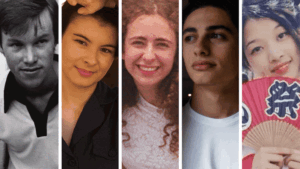
Screenshot
Artificial Intelligence (AI) is increasingly becoming a staple in the gaming industry, with nearly half of developers experimenting with AI tools, particularly in art and prototyping, according to the Game Developers Conference’s 2024 State of the Industry survey. Major game development companies are also committing to integrating AI into their workflows. While AI promises to save time and money, its application in game art is fraught with potential pitfalls, leading some experts to label it a “fool’s errand.”
A recent analysis by Denys Kliuch in Forbes highlights the challenges of using AI in video game art. Common issues include anatomical errors such as extra fingers, distorted limbs, and style inconsistencies that fail to capture players’ imaginations. These errors can lead to player backlash and compromise the overall gaming experience, regardless of the quality of game mechanics and world-building technology.
Reputational Risks in AI Game Art
The use of AI in game art can pose significant reputational risks. When players detect AI-generated anomalies in their favorite games, they often voice their concerns on platforms like Reddit, drawing attention from the gaming press. This was the case when “Call of Duty: Black Ops 6” introduced AI-assisted loading screens featuring a zombie Santa Claus with six fingers, causing embarrassment for Activision.
“Even for the most valuable franchises in the world, the reputational damage can outweigh the cost savings,” says Denys Kliuch. “The message from the community is clear: Shortcuts in art are instantly visible, and they can erode trust.”
Strategic Use of AI in Game Development
Despite its challenges, AI has a place in game development, particularly in pre-production phases. It can be a valuable tool for creating mood boards, exploring concepts, and prototyping. AI excels in generating “wild card” ideas, allowing artists to explore creative possibilities without committing extensive resources.
Kliuch advises against using AI for final production art, which requires consistency, storytelling, and emotional depth that AI cannot deliver. These elements are crucial for player engagement and are best crafted by human artists. “Think of AI as a brush, with artists as the painters,” he suggests, emphasizing the importance of human touch in final game art.
The Future of AI in Gaming
The integration of AI into game creation is a double-edged sword that demands careful consideration. While AI can accelerate early development stages, freeing artists to focus on creating compelling art, its misuse can damage the player experience and the game’s reputation. The key lies in using AI strategically, ensuring it enhances rather than detracts from the artistic vision.
As the gaming industry continues to evolve, developers must weigh the benefits of AI against its risks. The future of AI in gaming will likely involve a balanced approach, where AI is used to complement human creativity rather than replace it. This strategy will ensure that games not only captivate audiences but also maintain their artistic integrity.






